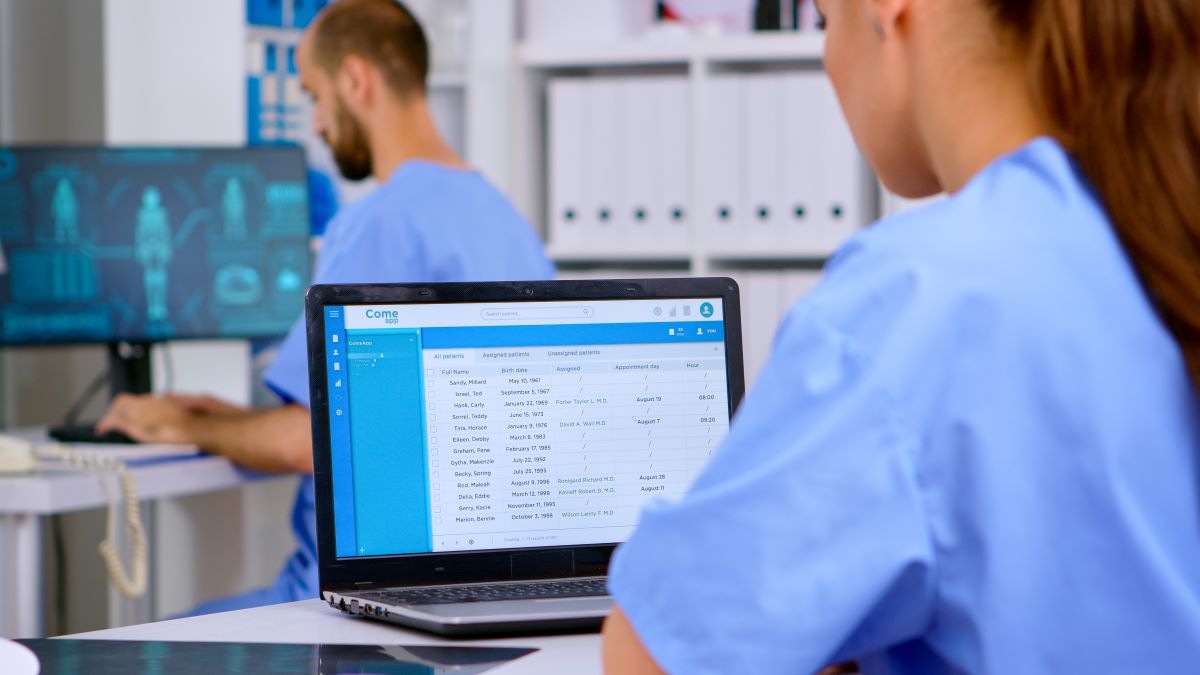Source-Oriented Medical Record Format: Overview and FAQ

It’s important for healthcare organizations to compile accurate and well-organized medical records for safe and efficient care. Facilities choose the appropriate format for organizing data based on their size, acuity, and patient population. The source-oriented medical record format is one common strategy healthcare leaders utilize to keep track of patient progress and assess treatment efficacy.
In this article, we review the concept of source-oriented charting, explain the benefits and drawbacks of using this style of data documentation, and provide some examples for how it can be used to promote collaborative patient care and improve health outcomes.
What Are Source-Oriented Medical Records?
Source-oriented patient medical records organize patient data chronologically by service or specialty. Nursing staff, physicians, dieticians, and other care providers document patient progress and health outcomes according to their specialized and unique treatment plans.
For example, a respiratory therapist may document a patient’s decreased breathing rate and increased ventilatory machine needs while a dietician records data on a patient’s nutritional status and caloric requirements. In the electronic health record (EHR), these service notes are organized in chronological order, usually with the newest note listed first, and older notes toward the bottom of the list.
Each provider tracks patient progress on their unique plan of care and documents recommendations for future treatment based on whether they’re meeting service-specific benchmarks. Because a patient’s health status changes frequently during treatment or hospitalization, these source-oriented notes require periodic updating and revision.
How Do Source-Oriented Medical Records Compare to Other Charting Methods?
There are two main strategies for medical record organization: source-oriented charting and problem-oriented charting. The main difference between source-oriented and problem-oriented medical records is the way data is presented in a patient’s EHR.
While source-oriented records focus more on grouping notes based on who supplied the information, problem-oriented records are systematic and group provider notes based on each unique patient problem. This allows providers to work collaboratively and develop team-based solutions to patient health problems.
Problem-oriented charting is composed of four elements: a database, a problem list, an initial plan, and progress notes. Specialty providers will document their findings in the “progress notes” section, making it easy to see all provider feedback for those who are weighing in on a particular problem or disease.
Different patient diagnoses and problems will contain notes from the providers weighing in on that particular diagnosis. For example, if the patient’s diagnosis is “femur fracture due to motor vehicle accident,” the surgeon, nursing team, physical therapist, and pain doctor will all document on the same progress note and update findings when necessary.
Problem-oriented charting doesn’t order things chronologically, but instead orders the problem sets as “active” versus “non-active.” This helps providers and patients who may be viewing health data to understand treatment goals based on the current and relevant health problems.
What Are the Main Source-Oriented Medical Record Advantages and Disadvantages?
After learning about the different ways to structure patient data, many healthcare organizations wonder about the pros and cons of source-oriented charting. Nursing leaders often look for ways to streamline the caregiving process — understanding the frustrations their teams face can help them develop meaningful improvement strategies.
The advantages and disadvantages of utilizing source-oriented patient charting include the following:
| Advantages | Disadvantages |
|---|---|
| Seeing a patient’s progress according to each care specialty
Visualizing notes in the order that they were written, making it easy to find the most recent care updates and treatment plans Tracking progress across the multidisciplinary team to facilitate a coordinated discharge |
Difficulty finding up-to-date information when patients have multiple comorbidities and many specialties are involved
Fragmented data among the treating providers, making it time consuming to find follow-up notes with relevant information Limited cross-referencing and “silo-writing” leading to duplicated or missed information |
Despite the challenges associated with source-oriented patient charting, healthcare organizations that provide long-term care with a small healthcare team may find it the most useful way to categorize provider notes.
Which Facilities Should Use the Source-Oriented Approach?
Low-acuity facilities and centers providing straightforward treatments often experience the most success with source-oriented documentation. These include long-term care facilities, nursing homes, walk-in clinics, and outpatient rehabilitation centers that treat patients with non-acute illnesses. Hospitals that provide intensive treatment to patients with multiple significant illnesses and injuries may find it easier to view data in a problem-oriented structure.
Improve Patient Documentation and Optimize Health Outcomes
It can be difficult for facilities to understand the benefits and drawbacks of utilizing a source-oriented medical record. Our team of healthcare experts can help you decide on appropriate treatment techniques for your unique patient population. Our IntelyCare newsletter provides the latest resources to improve your team’s caregiving process and help patients thrive.
